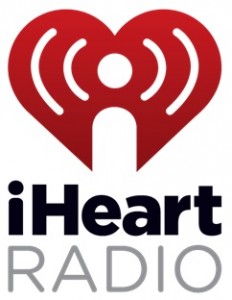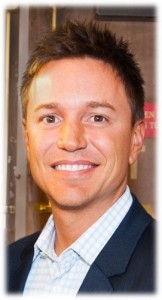It’s no secret that the ways in which listeners are consuming audio is shifting constantly and has been for some time. The ubiquity of smartphones and the growth of streaming all but require radio stations to deliver their content in ways that consumers can access without having a radio nearby.
 iHeartRadio, the platform launched by Clear Channel (now iHeartMedia), now makes more than 2,000 broadcast radio stations across 150 markets available in one place. Participating companies include Greater Media, Cox, Emmis, Cumulus, and Univision, along with public radio stations like WNYC, and EMF’s Air1 and K-LOVE. From the start, it’s been an ambitious project with the goal of giving radio content a strong presence everywhere listeners are headed.
iHeartRadio, the platform launched by Clear Channel (now iHeartMedia), now makes more than 2,000 broadcast radio stations across 150 markets available in one place. Participating companies include Greater Media, Cox, Emmis, Cumulus, and Univision, along with public radio stations like WNYC, and EMF’s Air1 and K-LOVE. From the start, it’s been an ambitious project with the goal of giving radio content a strong presence everywhere listeners are headed.
Clear Channel was very early with iHeartRadio and the platform has evolved and expanded since its birth exactly seven years ago in 2008.
To learn more about the growth and future of iHeartRadio, we spoke to Darren Davis, president of iHeartRadio & iHeartMedia Networks, to get the story of how this platform was launched, how it’s growing, and where it may end up. Today, iHeartRadio is in the “Radio’s Most Innovative” spotlight.
JM: What was the most difficult part of building the initial platform? How did you overcome the hurdles?
DD: Building a world class digital team isn’t a quick or easy proposition, especially in NYC where there’s such tremendous competition for tech talent. But our acquisition of the savvy ThumbPlay team, coupled with our seasoned existing digital team, gave us a wonderful foundation and allowed us to launch rather quickly. The challenge then was (and still is today) operating with the agility of a digital start-up but with the resources and power of America’s largest media company.
JM: Was there a milestone number of downloads you originally targeted as a measure of success?
DD: Our initial goal at launch was not to “beat Pandora,” but they provided an obvious benchmark since they had been in the digital music space for so many years. You always measure yourself against the leader at any given time; so all along we’ve strived to close the gap in brand awareness, brand satisfaction and registrations, and we’ve exceeded expectations in all three metrics. But our biggest goal is to be everywhere our listeners are with the products and services they expect. Consumer satisfaction is most important and our biggest measurement of success.
JM: With the platform’s national reach you get to aggregate a lot of data. Has there been one statistic or consumer behavior that has stood out to you?
DD: It’s been wonderful to see the growth from 4 years ago when iHeartRadio launched to today. We have grown to 75% brand awareness in America and my favorite part is that we didn’t grow by buying TV commercials or placing newspaper or magazine ads. We advertised ON THE RADIO; it’s perhaps radio’s greatest, most successful case study.
 JM: What is the biggest challenge in managing such a big, diverse platform?
JM: What is the biggest challenge in managing such a big, diverse platform?
DD: It’s tough of course for anyone to accurately predict what platforms will be big and important next year or further down the road. So we’ve made it our mission to make sure iHeartRadio can be found everywhere consumers could possibly want to enjoy our radio brands: smartphones, computers, tablets, televisions, gaming consoles, automobiles, even wearable devices. It’s important to us that wherever consumers decide they want content, iHeartRadio is there.
JM: What kind of research do you do to determine what new features consumers want?
DD: It’s a 365 day a year exercise. We are constantly testing and experimenting to see what works best with consumers. The colors of the app, the layout, the size of the buttons and controls, the location of certain features, even the words we use to describe things. It’s not for us to guess; it’s our job to find out what consumers actually want and to give it to them. I think that’s how we’ve been so successful so quickly. We reached 60 million users faster than any other radio or digital music service and even faster than Facebook. And for 60 million people to have registered with iHeartRadio already with over 500 million app downloads we must be doing something right.
JM: You have a lot of partners both for content and technology. What do you look for when you evaluate a potential partnership?
DD: It’s never smart to assume you have all the best answers internally. So we love partnering with other smart companies who can open our eyes to new ideas and bring us innovative solutions. There’s not a week that goes by that we aren’t talking with multiple companies about potential partnerships. We love to try new things.
JM: What led to the decision to open iHeartRadio to other broadcasters and stations – beyond what was the Clear Channel portfolio of radio stations? And how has it worked out?
DD: When we launched the new iHeartRadio in 2011, it was only Clear Channel stations. Shortly after announcing it, we received calls from radio station groups asking to be a part of it and at that point we really had to evaluate whether we wanted other radio groups on a platform that we had built. We decided we had limited room and would offer carriage where it makes sense, and took on some broadcasters. We feel it’s good for the radio industry.
iHeartRadio is broadcast-friendly and partnership-focused – managed with the best interests of radio and broadcasters in mind. We also know how to advertise and promote it, and awareness of iHeartRadio has gone from zero to more than 75% since launch in terms of brand recognition. It is one of the major brands not only in the radio space, but also the music space. Working with iHeartRadio enables partners to be confident that their stations and content are presented to listeners on the highest-quality platform. For those companies, we act more like a portal than a search engine.
JM: Podcasting has received a lot of attention lately following the success of Serial. How significant a role does it play for iHeartRadio and do you see it as a growth area?
We want to offer audio in all forms; any way fans want to consume audio. So our podcast offerings inside iHeartRadio are quite impressive, I think. We have daily content from iHeartMedia’s hottest local and national personalities and content from national partners like ABC, CNN, Yahoo, and more.
JM: What do you see as the role of apps in the dashboard as more “connected cars” are sold to consumers?
DD: We want our content to be platform agnostic and it’s important to accumulate shelf space. So it’s good business for us to have our iHeartMedia stations available in the digital dashboard for listeners who want to consume content that way. It’s not for us to decide where people should listen to our content. It’s our job to be everywhere so consumers can find our stations where and when they choose to.
One thing to note – even though there’s an increasing amount of apps available in the dash, including many existing music apps, a research study we commissioned from Ipsos clearly showed that drivers overwhelmingly still want the ease of AM/FM radio and the simplicity that comes with just pushing a button on their dial. We commissioned this nationally representative research because we are a key player in both AM/FM broadcast and digital radio, and we want to fully understand what consumers want from their in-car audio experience.
JM: Can you explain how iHeartRadio is similar to Pandora and how it is different?
*DD: Radio is completely different from playlist creators such as Pandora – Radio lets you engage with the world and find the music, news, traffic, sports, gossip, weather, events, DJs and talent, etc. that you’re interested in, and helps you be part of what’s going on. Playlist creators (or music collections) are the opposite – they’re for when you want to escape from the world and be alone in an environment you create. Music collections have existed in some format or another for decades (45s, albums, cassettes, CDs, iPods, MP3 players, etc.) With iHeartRadio, we do both. Pandora just does music collection. iHeartRadio provides a platform for our listeners to access their favorite live radio stations and personalities as well as custom stations – based on a favorite artist or song, and non-audio content.
It’s important to point out that digital is “in addition to” not “instead of” broadcast. Digital listening is additive to overall broadcast listening. iHeartRadio is primarily a tool to further extend the reach, power, and success of our 850 local radio brands and those of our partners like Cumulus, Cox, Univision, Emmis, and others.
JM: What led to creating and promoting branded events like the iHeartRadio Music Festival and the Pool Party?
DD: The original goal was to create events that could help build awareness of iHeartRadio and also capture the essence of what music is all about: energy, passion, excitement, and the deep connection between artists and their fans. It started with the iHeartRadio Music Festival and then the iHeartRadio Ultimate Pool Party. Since then we’ve added the iHeartRadio Country Festival, the iHeartRadio Jingle Ball Tour, and the iHeartRadio Music Awards. These pop culture defining events have captured the imagination of our listeners, giving our radio stations a way to naturally talk about iHeartRadio year round, and helped boost listening occasions (and ratings) at stations that award trips to our awesome events.
JM: Innovation on any scale is difficult. What’s your best advice for someone with an idea who is struggling to get started?
DD: Three things… Focus on the consumer. Focus on the consumer. And focus on the consumer.
* The first version of this post contained an incorrect response from Darren that was on our end. It’s been corrected.
Thanks to Mike Stern for putting together this week’s “RMI” post.
INNOVATION QUOTE OF THE WEEK
“Mistakes are a byproduct of innovation. Genius gets it right maybe half the time. You have to be prepared that most of the decisions you make, most of the things you create, are going to be wrong…. you keep on failing, failing, failing until you find the winner.”
Bob Pittman, iHeartMedia CEO
More of Radio’s Most Innovative
- Radio’s Most Innovative: GeoTraffic
- Radio’s Most Innovative: PRX’s Podcast Garage
- Radio’s Most Innovative: WNYC Studios
- Radio’s Most Innovative: Mens Room Original Red
- Radio’s Most Innovative: Joel Denver/All Access
- What To Do If Your Radio Station Goes Through A Midlife Crisis - April 25, 2025
- A 2020 Lesson?It Could All Be Gone In A Flash - April 24, 2025
- How AI Can Give Radio Personalities More…PERSONALITY - April 23, 2025






This designation should go to Mark Cuban. iHeart is just a retooled Broadcast.com
Interesting idea.